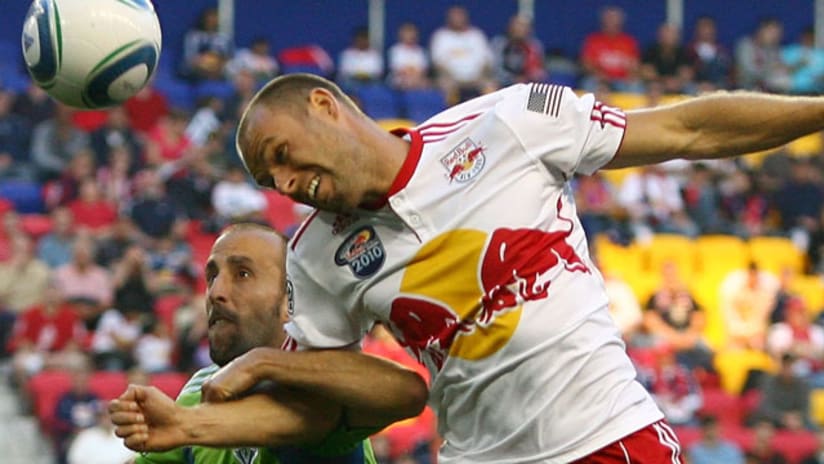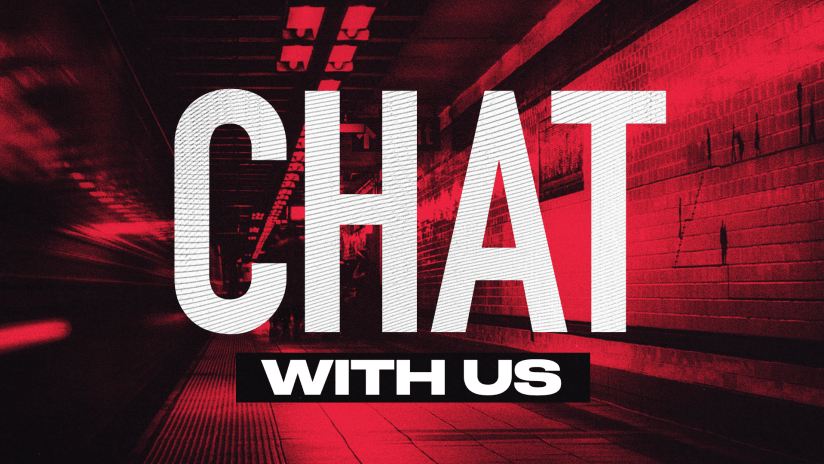Everyone recognizes the value of a striker who consistently finds a way to through. Worth their weight in gold, those guys.
And we all recognize what a blue-ribbon goalkeeper can mean.
Creative midfielders who zip passes into forwards in good spots? Check. Flank midfielders who can cross a good ball? Check. Center backs who patrol with authority? Check. Overlapping fullbacks who hold down their side and put extra numbers into the attack? A little less obvious, perhaps, but we generally see it.
But what about that one solid possession guy right in the middle? If he’s a hard-tackling, uncompromising defensive midfielder, then we know about him.
But what if he’s a little less glamorous? Just a darn good presence at establishing possession? I’ve long said that guys who claim possession, create a little time and space for themselves and then move the ball calmly along in the middle of the park, are probably soccer’s most undervalued commodities. It’s been this way since Thomas Dooley was the US man in the middle throughout the mid-1990s. Plenty of people didn’t see Dooley’s value as a connector, someone who could make life easier for others with calm and sure work on the ball.
With smart positioning, by shifting a yard or two to receive balls in better places, these connectors subsequently provide others with more useful passes, so that they have an easier time on the ball.
But unless you’re watching with laser-lock focus, it’s easy to miss—or dismiss—the simplicity of what they do. So it tends to be a tremendously under-valued position.
Look at Julian de Guzman at Toronto. I’ll be the first to admit to some mixed feelings about TFC’s Designated Player. He’s clearly a talent, but he sometimes struggles to make all the passes he should. Sometimes he doesn’t seem like he’s all there.
On the other hand, TFC are clearly a better side when he’s on the field. When fully present, de Guzman allows young central midfield partner Amadou Sanyang to be a better player, because de Guzman works himself astutely into spots where Sanyang can tackle and easily find a teammate with the pass.
True, de Guzman has just one assist and no goals in 16 games with TFC, so we can always debate DP value, but in the big picture, Preki’s bunch is better with their midfield connector pulling the strings.
In the Los Angeles match two weeks ago, de Guzman came on and helped stabilize the TFC midfield in a tactical contest that was all about possession and safety. Against Houston last Saturday, his work in the middle created several chances for the Reds. Just as tellingly, once he was sent off (along with Houston’s Joseph Ngwenya), the visitors grabbed hold of the midfield and helped themselves to a few good chances, including the game’s opening goal in the eventual 1-1 draw.
De Guzman is not unique in MLS. Real Salt Lake’s Kyle Beckerman is another terrific midfield connector. He’s known more for his tough tackling and fierce work rate, but his simplicity with the ball is equally valuable to RSL. They’re doing fine without him right now, but to truly make a run at LA in the West, they’ll need their captain and all his tidy work in middle of the park.
In Dallas, David Ferreira gets a lot the credit for pulling the offensive strings. But almost every FCD possession begins with Daniel Hernandez. He is fast approaching his 34th birthday, and central midfielders in their mid-30s are fairly rare beasts. But Hernandez enjoys a role that allows him to be effective, sitting deep as the midfield screener in the team’s 4-1-4-1 setup. Perhaps even more important than his defensive work is his clever positioning and ball handling. Hernandez is a master at efficient movement, at taking those one or two easy steps to better align his body relevant to opponents.
New York’s Joel Lindpere may be the best overall addition any MLS side has added in 2010. His body of work has been as responsible as anything else for Red Bull’s recovery from last year’s pitiful pose. People see his ability on restarts and the danger he poses with pushes into the attacking third. But his calm, smart and steady ball-handling is probably more important than any of it. His work against Colorado was a big reason for a well-earned 1-1 draw in a place where New York has had very little success historically.
There’s another way a connector in midfield helps a team: by not committing cheap turnovers in bad spots. Teams pay the ultimate price for an inability to cleanly maintain possession in the midfield transition from defense to the attack. It happens every week. For instance, Chivas USA’s failure to steer the ball out of the back against Philadelphia proved costly at the Home Depot Center.
Also at the HDC, if you go back to the origins of Los Angeles’ first goal, you’ll see where the entire problem begins for the visitors from Seattle. A lot will be made of Kasey Keller’s swinging miss on the first corner kick near the 19th minute—and Keller’s continued struggles to consistently handle routine chores certainly deserves discussion—but go back further and you’ll see that the entire sequence begins with a couple of imprecise midfield passes from Patrick Ianni and Pete Vagenas. Again, it’s not glaring. But without midfield linchpin Osvaldo Alonso in the lineup to make simple, stabilizing passes, to set up attackers Freddie Ljungberg, Fredy Montero and Steve Zakuani in good spots, routine matters of possession and distribution become more difficult than they need to be.
In short, if your team has a proficient midfield connector, do yourself a favor and don’t overlook what he’s bringing to the exercise. It is very often the difference between no points and three.





